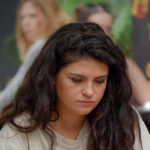From Classic to Contemporary: How Design Trends Evolve Over Time
November 18, 2024

Design is a reflection of the times, capturing the cultural, technological, and aesthetic aspirations of societies. From classic styles to contemporary approaches, design trends evolve continually, each influenced by previous movements while paving the way for new innovations. This article explores how design trends transition over time and the factors that drive these changes.
1. The Nature of Design Trends
Design trends encompass various fields, including architecture, fashion, interior design, and graphic design. Each trend typically follows a cyclical pattern of popularity, often returning to revive elements from the past while integrating modern influences. Understanding the dynamics of design trends requires us to consider how societal changes, technological advancements, and cultural movements shape them.
Trends can emerge from:
- Cultural Shifts: Changes in societal values, such as sustainability or minimalism, influence design aesthetics significantly.
- Technological Advancements: New materials, tools, and production methods allow designers to explore unprecedented possibilities in their work.
- Influence from the Past: Nostalgia plays a vital role; designers often draw from historical periods that resonate with contemporary audiences.
By analyzing these factors, we can trace the evolution of design trends and how they reflect the zeitgeist of different eras.
2. The Cycle of Design Trends
Design trends can be thought of as a pendulum swing, moving between extremes over time. Let’s look at the distinct phases in the evolution of design:
– **Revival Phase:** In this initial phase, elements from a past era resurface. This revival can be subtle, as seen in the resurgence of vintage clothing styles, or bold, resembling entire architectural movements like Neo-Classical.
– **Innovation Phase:** This phase witnesses experimentation. Designers push the boundaries of what materials and concepts can achieve, often incorporating technology and sustainability. Innovations in 3D printing, for example, have revolutionized how products are created today.
– **Saturation Phase:** Trends can become overexposed during this phase. What was once fresh and exciting can become clichéd. For instance, the overly minimalist design approach of the late 2010s began to saturate, leading to a search for more eclectic choices.
– **Evolution Phase:** Following saturation, designers often adapt or blend trends to keep them relevant. From this, hybrid styles emerge, integrating aspects of multiple influences for a unique aesthetic.
Each phase can last different lengths of time depending on various factors, including market demands, cultural influences, and technological developments.
3. Classic Design Trends: Timeless Influences
Certain design styles remain influential across generations. These classic trends often serve as a foundation for contemporary design, resonating with audiences long after their initial appearance.
– **Art Deco (1920s-1930s):** Characterized by bold geometric shapes, rich colors, and luxurious materials, Art Deco remains popular for its elegance and grandeur. Even today, you can find Art Deco elements in modern interior designs, creating a blend of past and present.
– **Mid-Century Modern (1940s-1960s):** This style emphasizes functionality and simplicity, featuring clean lines and organic forms. Its resurgence in the current design landscape highlights its enduring appeal, often seen in furniture and home decor.
– **Minimalism (1960s-Present):** Stemming from the modernist movement, minimalism focuses on simplicity and the elimination of excess. It remains one of the strongest trends today, emphasizing the mantra “less is more” in various design contexts.
These classic influences demonstrate how certain styles endure, often reinvented for a modern audience.
4. Contemporary Trends: A Reflection of Current Values
Contemporary design trends address modern challenges and reflect current societal values. Some popular contemporary trends include:
– **Sustainability:** With growing concerns about climate change, sustainable design prioritizes eco-friendly materials and practices. Designers are now focusing on creating functional, aesthetically pleasing products while being environmentally conscious.
– **Biophilic Design:** This trend emphasizes the connection between nature and human health. Integrating natural elements such as plants, natural daylight, and organic materials into design promotes well-being and tranquility.
– **Digital Integration:** As technology evolves, designs increasingly connect with digital experiences. Augmented reality (AR) and virtual reality (VR) experiences have begun to shape how we interact with design in retail environments and home decor.
These contemporary trends not only elevate aesthetic value but also challenge designers to innovate beyond traditional boundaries.
5. Future Trends: Anticipating Change
Looking ahead, certain emerging trends are poised to shape the future of design:
– **Customization and Personalization:** As consumers seek unique experiences, the demand for personalized designs will continue to grow. Brands that offer customization options will likely see increased loyalty and engagement.
– **Smart Technology Integration:** The Internet of Things (IoT) is transforming design, as homes become smarter. Designers will explore how technology can enhance functionality while maintaining aesthetic appeal.
– **Return to Craft:** In contrast to the mass-produced mentality, a renewed interest in handcrafted and artisanal products is gaining momentum. This trend indicates a longing for authenticity and connection to the maker.
As trends evolve, so do designers’ strategies to innovate, integrating past influences with contemporary issues faced today.
Conclusion: The Interconnectedness of Design Trends
The evolution of design trends illustrates a rich tapestry of cultural expression, technological advancements, and individual creativity. By understanding the lifecycle of these trends, we gain insight into the societal undercurrents that shape our world. Design, therefore, is not merely decorative but a channel for communication and reflection.
The interplay of classic and contemporary styles will continue to inspire future designers to embrace innovation while respecting the heritage of the past. As observers of this dynamic landscape, we can appreciate the beauty and complexity of design in all its forms, recognizing its power to influence and transform everyday life.







